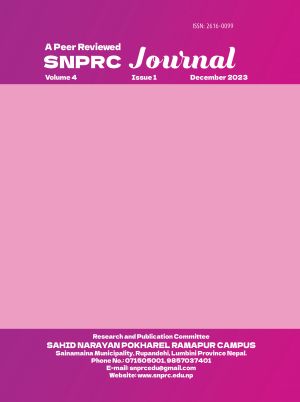The Universality of Art and Literature in P.B. Shelley’s “Ozymandias”
DOI:
https://doi.org/10.3126/snprcj.v4i1.61555Keywords:
Imitation, means, object, mannerAbstract
Ozymandias is about collapsed statue, constructed by Memnon, of Egyptian king Ramesses II in an empty desert. The people know about malicious King’s viciousness through poetry otherwise, all his city, empire and memorial on his praise have vanished over time. This research paper explores the theme of the universality of art over absolute monarchy, death and time. The hubris and dictatorship of the Egyptian ruler Ramesses II was transitory which faded in the past while the narration of the poem where an unnamed narrator at the beginning connects every normal individual around the world; the poetry establishes itself as the classic one passing down to many generations revitalizing the adept of the sculptor as well. Tyranny is not something to be praised over the years whereas art transfers its beauty to generations. Overall, the poet succeeds to prove the universality of art over absolute monarchy, death, and time. This article is researched through the lens of romanticism and mimetic theory. The romanticism not only centralizes the feelings and emotions of the innocent people who are subjugated to tyrants like Ramesses II but also normalizes the idea that such haughtiness, power and tyranny is common worldwide. Next, mimetic theory reflects the supremacy of imitation in art. This article shows how art is timeless in front of the so-called monarchy because the sculptor and poet of Ozymandias are alive forever but not the monarch.




